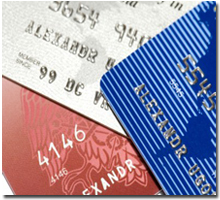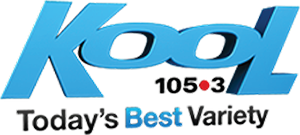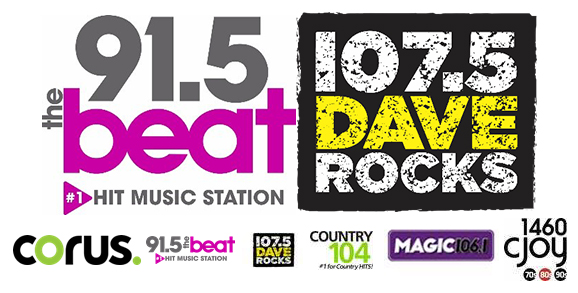
PAYMENT OPTIONS
We offer a variety of payment options to make paying for your insurance easy and convenient. You are welcome to pay at our office by cash, cheque or Interac! Many companies we represent have direct payment options. Contact your customer service broker to discuss the best payment option for you. A few of the companies we represent have the option for payment directly online or by telephone using your credit card:PAYMENT METHODS ACCEPTED BY INSURANCE PROVIDER
| Insurance company | Accepted credit cards | Pay online | Pay by phone |
| Aviva |
Visa & Mastercard & American Express |
www.aviva.ca/en/payment-broker | 1-800-360-5009 |
| Economical | Visa, Mastercard & American Express |
www.economical.com/en/make-a-payment | 1-866-858-4040 |
| Gore | Visa & Mastercard | www.goremutual.ca/pay-by-cc/ | 1-800-265-8600 |
| Hagerty | Visa & Mastercard | https://login.hagerty.com/TemporaryAccess?purpose=PayBill | 1-888-348-9369 |
| HD Mutual | Visa & Mastercard | https://hdmutual.com/payment-options/ | 1-519-836-2860 |
| INTACT | Visa & Mastercard | https://apps.intactinsurance.com/on/secure/payment-ontario.html | 1-416-440-8703 |
| Travelers/Dominion of Canada | Visa & Mastercard | www.travelers.com/pay-your-bill | 1-800-268-4543 |
Effective January 1, 2004 the Personal Information Protection and Electronic Documents Act (PIPEDA) and similar
provincial legislation will govern the collection, use and disclosure of your personal information.
Donovan Insurance Brokers Inc. is committed to respecting your right to privacy along with safeguarding your personal information.
POLICY 1- ACCOUNTABILITY
We are responsible for all personal information under our control and will designate one or more individuals who will be accountable for the organization's
compliance with the policies and procedures described in this Handbook.
POLICY 2- IDENTIFYING PURPOSES
We will identify the purposes for which we collect personal information at or before the time the information is collected.
POLICY 3- CONSENT
We will obtain the appropriate consent from individuals for the collection, use, or disclosure of their personal information, except where the law provides an exemption.
POLICY 4- LIMITING COLLECTION
The personal information we collect will be limited to that which is necessary for the purposes we have identified.
POLICY 5- LIMITING USE, DISCLOSURE, AND RETENTION
Personal information will not be used or disclosed for purposes other than those for which it was collected, except with the consent of the individual or as required by law.
We will only retain personal information as long as necessary for the fulfillment of those purposes.
POLICY 6- ACCURACY
The personal information we collect will be as accurate, complete and up-to-date as is necessary for the purposes for which it is to be used.
POLICY 7- SAFEGUARDS
We will safeguard the security of personal information under our control in a manner that is appropriate to the sensitivity of the information.
POLICY 8-OPENNESS
We will make readily available to individuals specific information about our policies and
procedures relating to the management of personal information which is under our control.
POLICY 9- INDIVIDUAL ACCESS
Upon request, an individual will be informed of the existence, use, and disclosure of his or her personal information which is under our control, and may be given access to,
and challenge the accuracy and completeness of that information.
POLICY 10- CHALLENGING COMPLIANCE
An individual may address a challenge concerning compliance with the above policies and procedures to our Privacy Officer.
Effective September 1, 2010
As part of the 5-year auto insurance review, the Ontario Government has issued a number of automobile insurance reforms that will become effective on September 1, 2010.
The intent of the reforms is "to streamline a number of processes for insurers and health care providers,
create a less complex auto insurance system, and protect consumers
while giving them more choice to buy coverage that best meets their protection needs and budget…"
Changes to the Ontario Automobile Insurance Gives You More Choice
Additional accident benefit choices will allow you to customize your policy to suit your needs. These choices will give you greater influence over the price you pay for insurance. Pricing will vary based on the benefits you purchase. For a list of key terms related to these benefits, review the list of definitions.
Your policy will remain unchanged until your next renewal. At that time, you will be provided with more information on the changes and your options.
For general information about changes to automobile insurance in Ontario, contact:
Insurance Bureau of Canada
Consumer Information Center
www.ibc.ca
Telephone (416)-362-9528
Toll-free 1-800-387-2880
Financial Service Commission of Ontario
www.fsco.gov.on.ca
Telephone (416)-250-7250
Toll-free 1-800-668-0128
TTY 416-590-7108, 1-800-387-0584
To understand the new terminology better, review this list of Automobile Insurance Reform Definitions.
ATTENDANT CARE BENEFIT
Pays for an aide or attendant to look after you if you have been seriously injured in an accident.
CAREGIVER BENEFIT
If you are providing full-time care to dependants and can no longer provide that care as the result of an auto accident, you may be eligible fro caregiver benefits to reimburse you or your expenses to hire someone to care for your dependents.
CATASTROPHIC INJURY
If you suffer from an injury in an accident, you can apply for a determination of whether your injury qualifies as "catastrophic" (e.g. loss of a limb, paraplegia). If the injury qualifies as “catastrophic”, you are eligible for an increased level of benefits.
COLLISION OR UPSET COVERAGE
Pays for losses caused when your vehicle is involved in a collision with another object, including another vehicle, or rolls over.
COMPREHENSIVE COVERAGE
Pays for losses for certain perils, such as falling or flying objects, and vandalism.
DEATH AND FUNERAL BENEFIT
If you die as a result of an auto accident, the death benefit provides a lump sum payout to your spouse and your dependant; the funeral benefit provides a lump sum payout to cover the cost of your funeral expenses.
DIRECT COMPENSATION - PROPERTY DAMAGE (DC-PD)
Covers damage to your vehicle or its contents if another person was at fault for the accident. It is called direct compensation because even though someone else causes the damage, you collect directly from your own insurer. The accident must also occur in Ontario and both drivers must be insured by an insurance company licensed in the province.
HOUSEKEEPING AND HOME MANTENANCE EXPENSES
If you are unable to perform your usual duties due to your injuries, this benefit pays for reasonable and necessary additional expenses for someone to complete your usual duties.
INCOME REPLACEMENT BENEFIT
IF you cannot work as the result of an auto accident, you may be eligible for basic weekly income replacement benefits of up to $400. This benefit commences after one week.
INDEXATION BENEFIT
The automatic adjustment of the income replacement benefit, non-earner benefit, attendant care benefit or medical and rehabilitation benefit according to the Consumer Price Index for Canada to compensate for inflation.
MEDICAL AND REHABILITATION BENEFIT
Covers the cost of reasonable and necessary medical and rehabilitation expenses (e.g. physiotherapy, prescriptions) that are not covered by OHIP or your disability insurance plan.
MINOR INJURY
Minor injuries, with respect to an auto accident, are sprains, strains, dislocations, lacerations, contusions, abrasions and whiplash injuries without nerve damage or fracture.
Sprain means an injury to one or more tendons or ligaments, or both, including a partial but not a complete tear.
Strain means an injury to one or more muscles, including a partial by not a complete tear.
THIRD PARTY LIABILITY
Claims made by a driver against another driver who causes an accident.
UNINSURED AUTO COVERAGE
Protects you and your family if you are injured or killed by a hit-and-run driver or by an uninsured motorist. It also covers damage to your vehicle caused by identified uninsured driver.
CANADIAN INSURANCE SERVICES REGULATORY ORGANIZATIONS (CISRO)
Principles of Conduct for Insurance Intermediaries
REGISTERED INSURANCE BROKERS OF ONTARIO (RIBO)
Fact Sheet About Your Registered Insurance Broker



Listen to Kevin:
New Smart Phone Insurance App - Auto
Listen to Kevin:
New Smart Phone Insurance App - Home

Listen to Tam:
How does Umbrella Insurance work?
Listen to Kevin:
Do you need special insurance when your
kids belongings when they go o to school?

The Ontario Broker
Donovan Insurance Brokers Inc.
2012 Brokerage Award of Excellence
TWO Years in a Row!
The Ontario Broker
Donovan Insurance Brokers Inc.
2011 Brokerage Award of Excellence


 ONTARIO
ONTARIO



